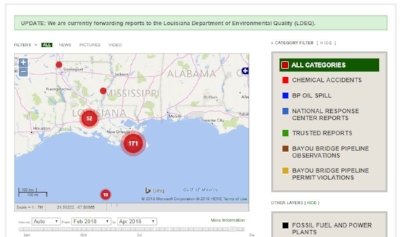The Nexus Of ICT4D And Environmental Justice: A US Perspective
Well, as a Black American woman from a low-income background, I constantly say that "development" not only takes place in Africa, Asia, and any other place typically associated with the Global South. There are several places even in the world's "richest" country that reflect not only deprivation but what happens when environmental justice is not served. In light of this and in honor of Earth Day on Monday April 22, in this post I will focus on the nexus of ICT4D and environmental justice in the US.
In a recent post from Popular Science, an informative and sweeping history of environmental injustice in the United States is provided with a focus on the impact of racially charged policies on Black Americans. In it, we see how it has been shown time and again that those who are viewed as socioeconomically weak and disempowered in the US are the ones often forced to bear the brunt of politicians' negligence when it comes to management of natural resources. For example, in Flint, Michigan, poor, working class, and largely ethnically diverse residents had to suffer from the effects of lead poisoning (only noticed by the swift actions of a local pediatrician) because politicians diverted their water source from one that was safe to one of questionable origin. The US government found over $200m (at a minimum) to launch missile strikes on Syria but could not find $55m to repair the pipes to ensure its own citizens had good and safe access to clean drinking water. Something is seriously wrong with this!
However, the post isn't all doom and gloom despite a number of shocking government and private sector failures and intentional destruction and degradation of communities. Citizen technology is increasingly being used to help ensure that communities can play a role in protecting the environment around them and fighting for redress when things run amok. The NAACP is helping residents of East Chicago, Illinois test their drinking water for lead contamination, while in Houston, Texas Environmental Justice Advocacy Services, and advocacy organization, is using thermal imaging cameras to monitor chemical spills and leaks that residents may not know are affecting them.
In Louisiana, iWitness Pollution Map is crowdsourcing a wide range of environmental issues (see screenshot below) with the help of the Ushahidi platform.
These reports are shared with the Louisiana Department of Environmental Quality (LDEQ), hopefully to ensure that action is taken to prevent or stop any environmental abuses. Given the current head of the US Environmental Protection Agency, Scott Pruitt, seems to be dead set on cutting any and all regulations that help prevent environmental injustices from occurring, the use of technology can be a catalyst for documenting, reporting, and eventually helping action be taken on issues that disproportionately affect black communities and communities of color more broadly.
If you're a US-based reader, are there any interesting ICT 4 Environmental Justice initiatives or technologies that you're aware of? How have they impacted people who use them? Sound off in the comments below!



